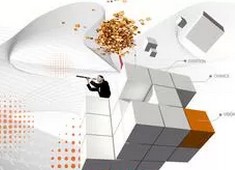Title: Strategies for Conducting Physical Fitness Assessments During Extraordinary Circumstances
In extraordinary times, such as pandemics or other crises, maintaining physical fitness assessments becomes challenging yet crucial for various institutions, including sports organizations, educational institutions, and government agencies. However, conducting these assessments requires innovative approaches to ensure safety while obtaining accurate results. Here are some strategies and methods for conducting physical fitness assessments during such special circumstances:
1. Virtual Assessments:

Utilize Technology:
Employ video conferencing tools to conduct live assessments where a fitness instructor guides participants remotely.
Home Setup Guidelines:
Provide participants with guidelines on setting up their home environment for assessments, including clear spaces for exercises and necessary equipment if available.
SelfAdministered Tests:
Develop selfadministered fitness tests that participants can perform at home under remote supervision.
2. Modified Testing Protocols:
Adapted Exercises:
Modify traditional fitness test protocols to accommodate limited space and equipment availability.
Bodyweight Exercises:
Focus on assessments that rely primarily on bodyweight exercises, such as pushups, squats, planks, and lunges.
Flexibility in Requirements:
Adjust assessment criteria to consider the constraints of the current situation while still maintaining validity and reliability.
3. Individualized Assessments:
Tailored Programs:
Design individualized fitness assessment programs based on participants' specific circumstances, such as age, fitness level, and available resources.
Virtual Coaching:
Offer virtual coaching sessions to guide participants through personalized fitness assessment routines and provide feedback.
Continuous Monitoring:
Implement continuous monitoring techniques to track participants' progress over time and adjust assessments accordingly.
4. Safety Measures:
Health Screening:
Conduct health screenings before assessments to ensure participants are healthy and symptomfree.
Hygiene Practices:
Emphasize strict hygiene practices, including hand washing, equipment sanitization, and respiratory etiquette.
Physical Distancing:
Maintain physical distancing protocols during inperson assessments and encourage remote alternatives whenever possible.
5. Data Security and Privacy:
Secure Platforms:
Use secure online platforms for data collection and storage to protect participants' personal information.
Informed Consent:
Obtain informed consent from participants regarding data collection, sharing, and usage, ensuring compliance with privacy regulations.
Anonymous Reporting:
Allow participants to opt for anonymous reporting if they have concerns about privacy or data security.
6. Communication and Support:
Clear Instructions:
Provide clear instructions and guidance to participants regarding assessment procedures, expectations, and timelines.
Support Resources:
Offer resources such as instructional videos, written guides, and FAQs to assist participants in preparing for assessments.
Responsive Feedback:
Establish channels for participants to ask questions and receive prompt feedback from fitness instructors or support staff.
7. Flexibility and Adaptability:
Contingency Plans:
Develop contingency plans to address unforeseen challenges or disruptions during assessments, such as technical issues or changes in circumstances.
Feedback Mechanisms:
Encourage feedback from participants to identify areas for improvement and make necessary adjustments to the assessment process.
Conclusion:
Navigating physical fitness assessments during extraordinary circumstances requires a blend of creativity, adaptability, and a strong focus on safety and privacy. By leveraging technology, modifying protocols, individualizing assessments, implementing safety measures, ensuring data security, fostering communication and support, and remaining flexible in approach, organizations can successfully conduct fitness assessments while prioritizing the wellbeing of participants. These strategies not only enable the continuation of assessment activities but also contribute to maintaining overall health and fitness during challenging times.





